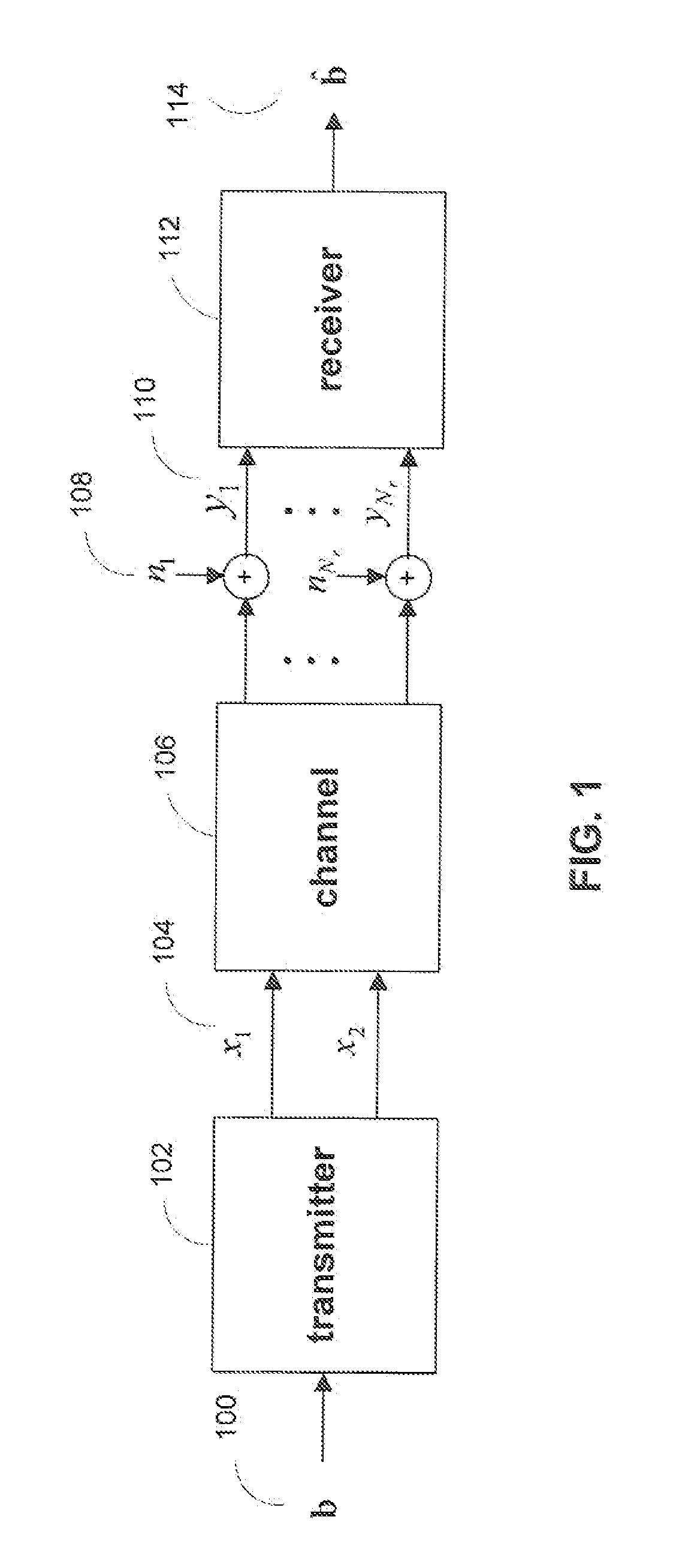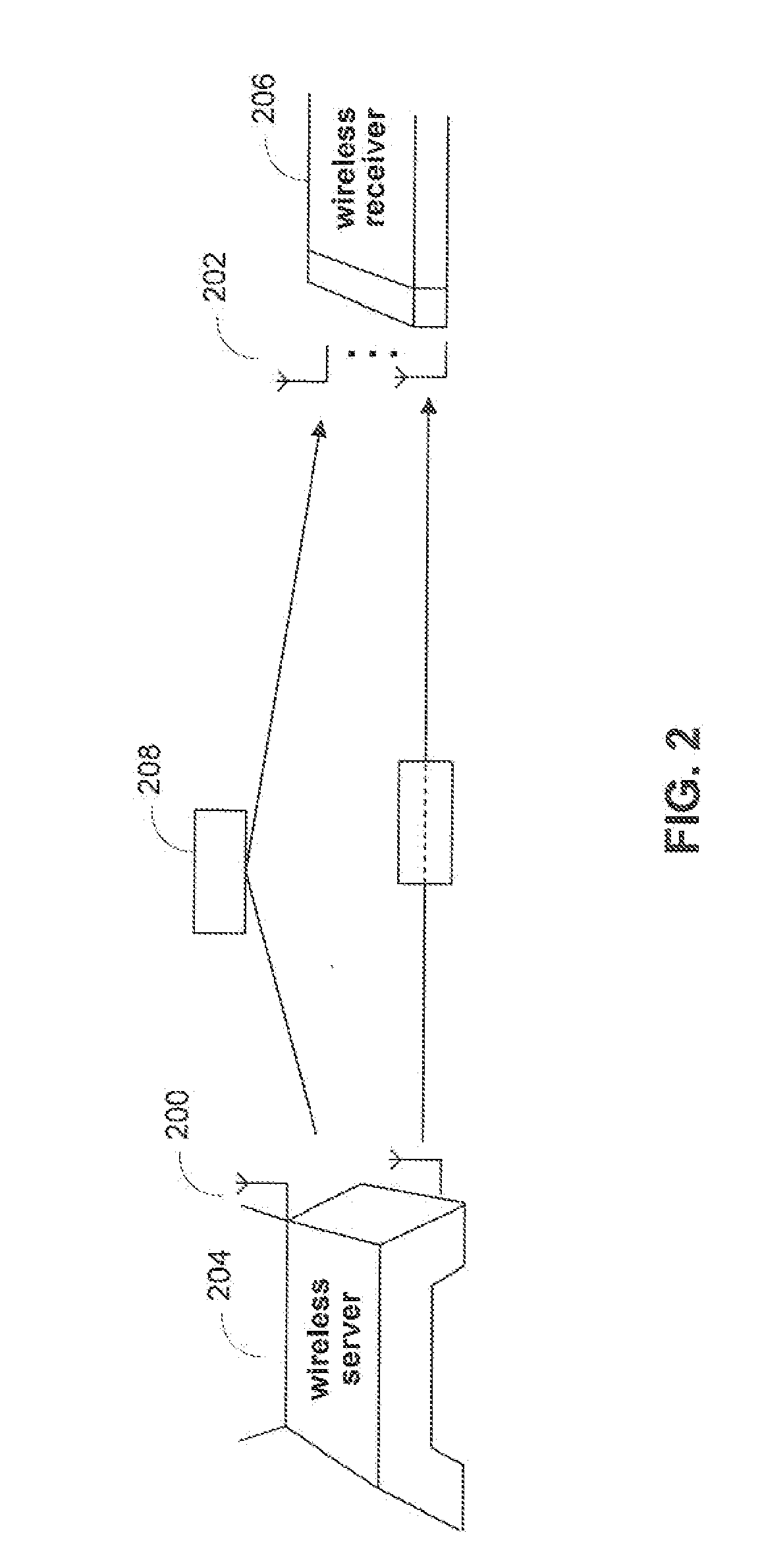Decoding method for alamouti scheme with HARQ and/or repetition coding
- Summary
- Abstract
- Description
- Claims
- Application Information
AI Technical Summary
Benefits of technology
Problems solved by technology
Method used
Image
Examples
Embodiment Construction
[0040]The disclosed invention provides a technique for decoding received symbols, where multiple copies of the same transmitted symbols are received.
[0041]FIG. 1 shows an illustration of a basic data transmission or storage system in accordance with one embodiment of the present invention. Data is sent from transmitter 102 to receiver 112. During transmission, the signals may be altered by a transmission medium, represented by channel 106, and additive noise sources 108. Transmitter 102 may have two outputs 104 and receiver 112 may have Nr inputs 110, so channel 106 is modeled as a multiple-input multiple-output (MIMO) system with two inputs and Nr outputs. The two inputs and Nr outputs are typically implemented spatially to create a system with transmit diversity.
[0042]In one embodiment, FIG. 1 represents a wireless communication system, pictured in FIG. 2. In this embodiment, transmitter 102 is a wireless server 204, such as a commercial gateway modem, and receiver 112 is a wirele...
PUM
 Login to View More
Login to View More Abstract
Description
Claims
Application Information
 Login to View More
Login to View More - R&D
- Intellectual Property
- Life Sciences
- Materials
- Tech Scout
- Unparalleled Data Quality
- Higher Quality Content
- 60% Fewer Hallucinations
Browse by: Latest US Patents, China's latest patents, Technical Efficacy Thesaurus, Application Domain, Technology Topic, Popular Technical Reports.
© 2025 PatSnap. All rights reserved.Legal|Privacy policy|Modern Slavery Act Transparency Statement|Sitemap|About US| Contact US: help@patsnap.com



